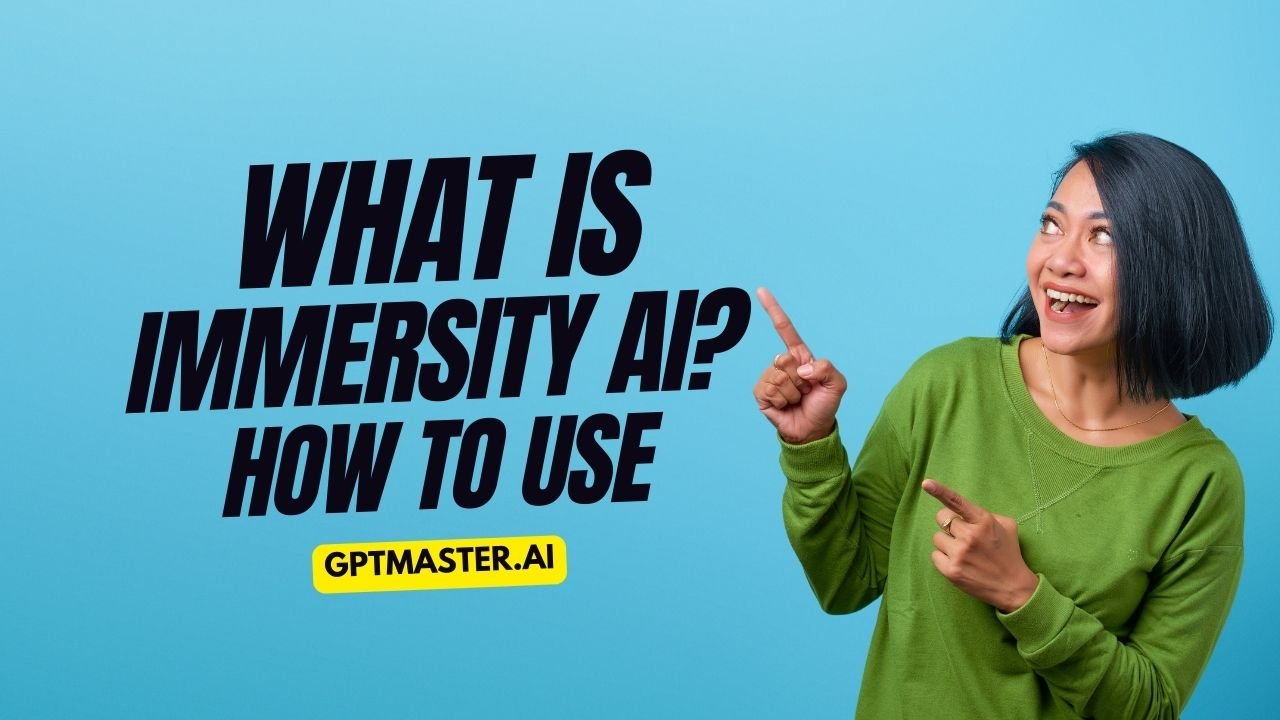Immersity AI came out as a groundbreaking platform that revolutionizes how we perceive and interact with visual media. This article delves into the intricacies of Immersity AI, exploring its features, applications, and the transformative impact it has on various industries.
What Is Immersity AI?
Immersity AI is an innovative artificial intelligence-powered platform designed to convert 2D images and videos into captivating 3D experiences. At its core, Immersity AI utilizes a sophisticated Neural Depth Engine that analyzes visual content to generate accurate depth information. This cutting-edge technology enables the creation of dynamic 3D motion effects and static 3D images from conventional flat 2D sources.
The platform’s ability to breathe new life into existing 2D content opens up a world of possibilities for creators, professionals, and businesses across various sectors. By making 3D content creation accessible to users of all skill levels, Immersity AI is democratizing the process of producing immersive visual experiences.
Key Features of Immersity AI
Immersity AI boasts an array of features that set it apart in the realm of 3D content creation:
- Neural Depth Engine: The heart of Immersity AI, this sophisticated AI system generates highly accurate depth maps from 2D inputs.
- Versatile Input Support: Accepts a wide range of image and video formats, including PNG, JPG, HEIC, and WEBP.
- Flexible Output Options: Users can create either 3D motion videos (MP4) or GIF animations.
- Intuitive Interface: Offers user-friendly controls to adjust depth, perspective, and other parameters for fine-tuning 3D outputs.
- Commercial Use Support: Provides a Premium Export option for professional and commercial applications.
- Temporary Storage: Exported 3D motion videos remain accessible for up to 7 days, while static images are available for 24 hours.
- Scalability: Capable of processing content from lightweight mobile applications to intensive cloud-based workloads.
- Depth-Based Enhancements: Includes tools for synthetic depth of field, recoloring, relighting, and depth layer editing.
- Real-Time Processing: Adapts to different input types and conditions, ensuring optimal depth processing for various use cases.
How To Use Immersity AI
Utilizing Immersity AI to transform your 2D content into immersive 3D experiences is a straightforward process. Follow these steps to get started:
Upload Your Content:
- Select the 2D image or video you wish to convert.
- Ensure your file is in a supported format (PNG, JPG, HEIC, or WEBP).
- Upload the content to the Immersity AI platform.
Choose Your Output:
- Decide whether you want to create a 3D motion video (MP4) or a GIF animation.
- Select the appropriate option in the platform’s interface.
Adjust Parameters:
- Use Immersity’s intuitive controls to fine-tune the 3D output.
- Experiment with depth, perspective, and other settings to achieve your desired effect.
Preview and Refine:
- Review the generated 3D content in real-time.
- Make any necessary adjustments to perfect your creation.
Export Your Creation:
- For personal use, select the standard export option.
- For commercial applications, purchase credits and choose the Premium Export option.
Access and Utilize:
- Retrieve your exported 3D motion videos from the My Exports page within 7 days.
- Download static 3D images within 24 hours of creation.
Integrate and Share:
- Incorporate your new 3D content into your projects, presentations, or social media.
- Engage your audience with the immersive experiences you’ve created.
The Power of the Neural Depth Engine
The Neural Depth Engine is the cornerstone of Immersity AI’s capabilities. This advanced AI system employs deep learning algorithms trained on extensive 3D image datasets to generate highly accurate depth maps. By analyzing visual cues and patterns within 2D content, the engine extrapolates detailed depth information, creating a corresponding depth map for the original image or video.
Immersity AI’s Neural Depth Engine stands out for its precision and speed in depth map generation. Through continuous fine-tuning and optimization, incorporating feedback from real-world 3D data captured by cameras, the engine produces depth maps with nuanced details and remarkable accuracy.
The scalability and adaptability of the Neural Depth Engine enable it to efficiently process a wide range of content, from lightweight mobile applications to intensive cloud-based workloads. This versatility ensures optimal depth processing across various use cases, including high-resolution images and real-time video streams.
Beyond depth map generation, the Neural Depth Engine powers a suite of depth-based image processing tools within Immersity AI. These include synthetic depth of field, recoloring, relighting, and the ability to edit and merge depth layers for complex 3D integrations. These features provide users with unprecedented control over their 3D creations, allowing for truly immersive and engaging visual experiences.
Conclusion
Immersity AI represents a significant leap forward in the democratization of 3D content creation. By harnessing the power of artificial intelligence and sophisticated depth mapping algorithms, this platform enables users of all skill levels to transform ordinary 2D content into captivating 3D experiences.
The intuitive interface, versatile input support, and powerful Neural Depth Engine make Immersity AI an invaluable tool for creators, professionals, and businesses across various industries. From enhancing advertising campaigns to revolutionizing educational content, the applications of this technology are vast and continually expanding.
As we move towards an increasingly immersive digital landscape, platforms like Immersity AI play a crucial role in bridging the gap between traditional 2D media and the three-dimensional experiences that modern audiences crave. By providing accessible tools for creating depth, dimension, and emotion in visual content, Immersity AI is not just transforming images and videos – it’s reshaping how we interact with and perceive the digital world around us.
The future of visual content is undoubtedly three-dimensional, and Immersity AI is at the forefront of this revolution, empowering creators to push the boundaries of what’s possible in digital storytelling and experiences.



